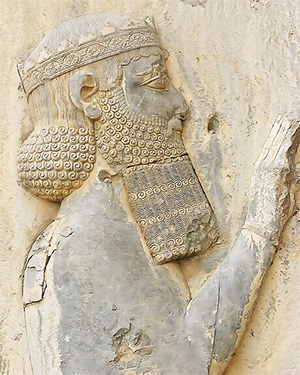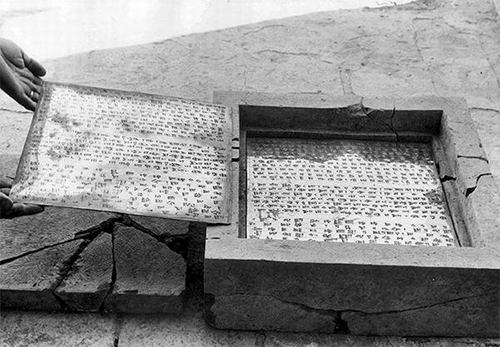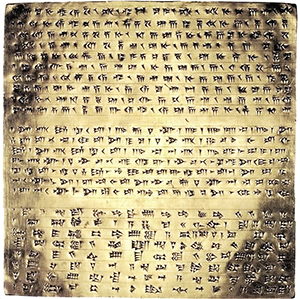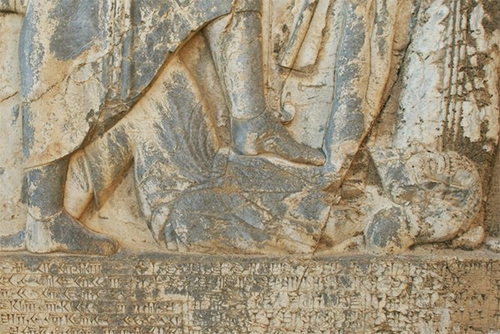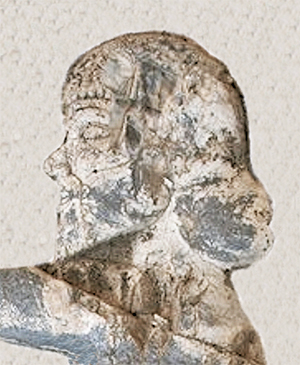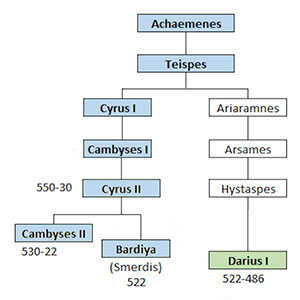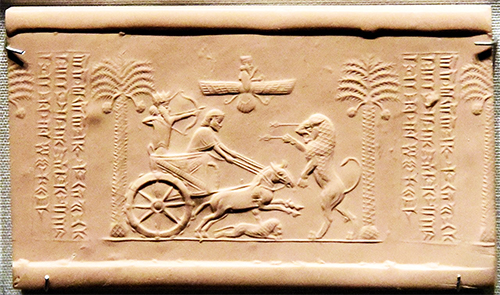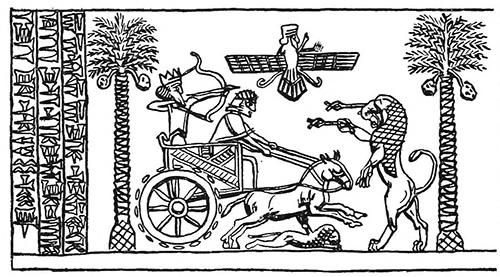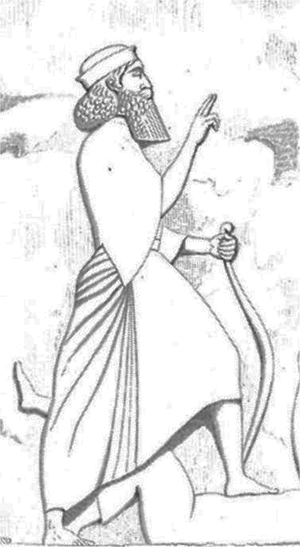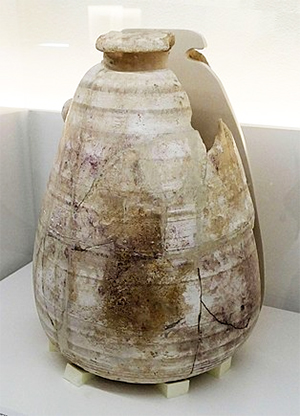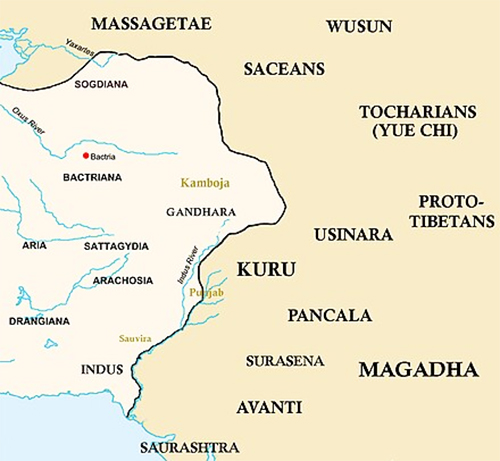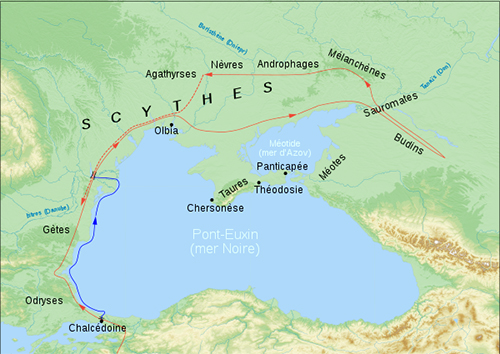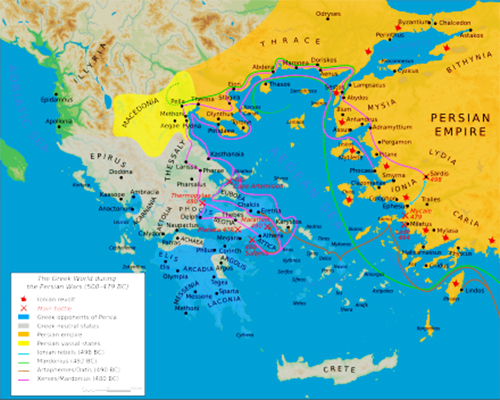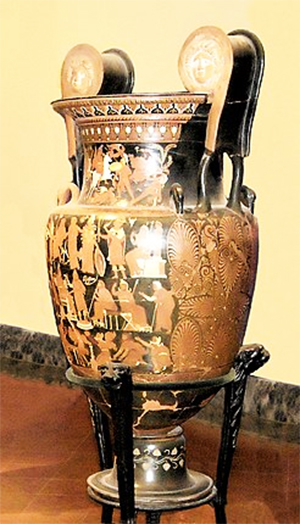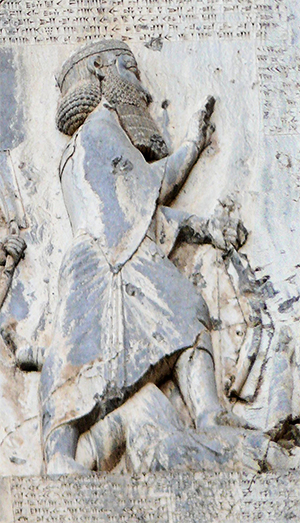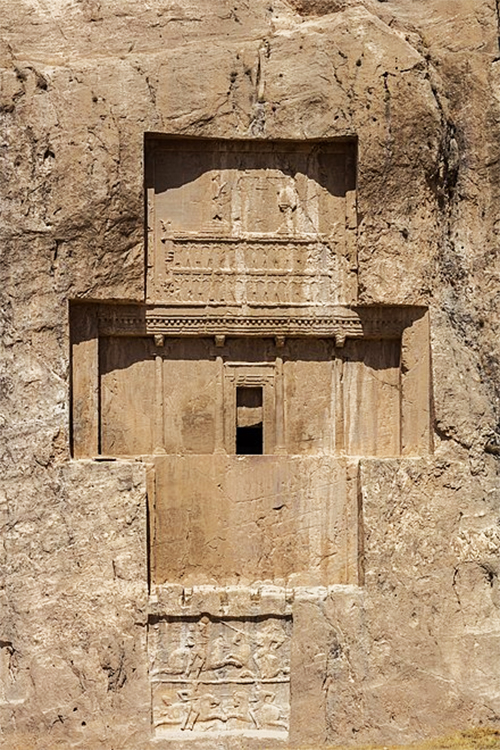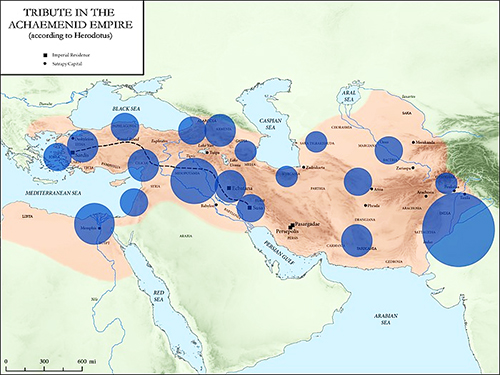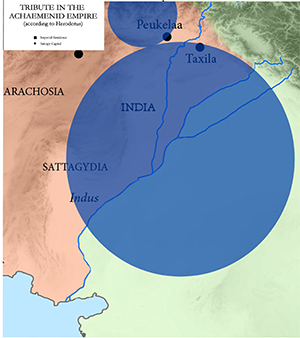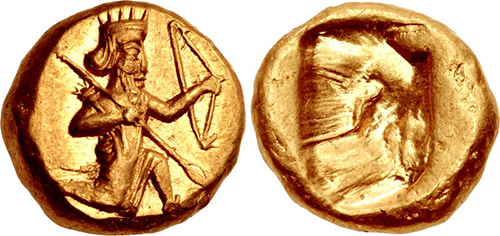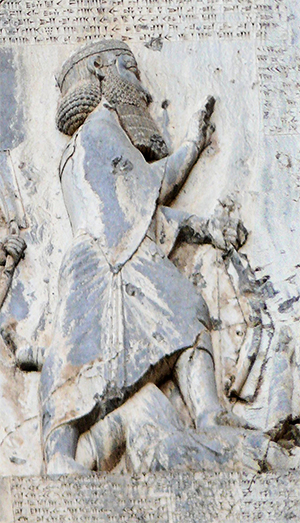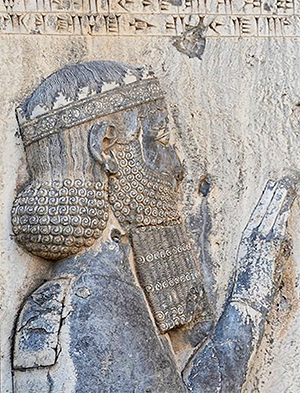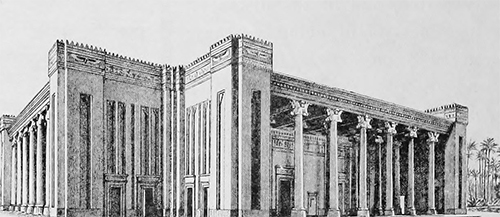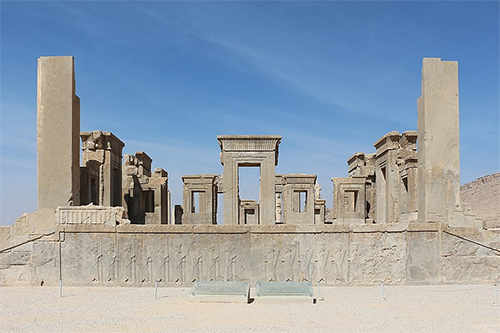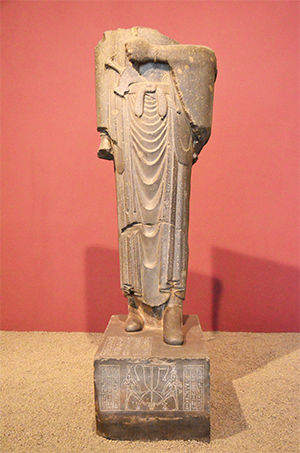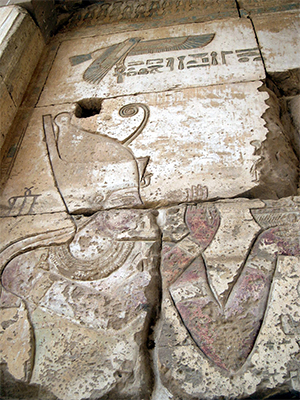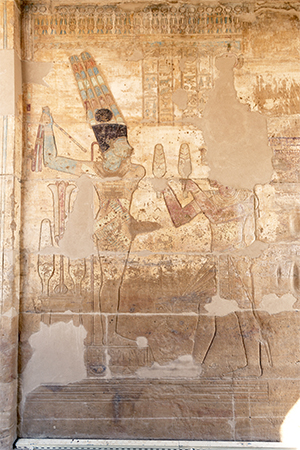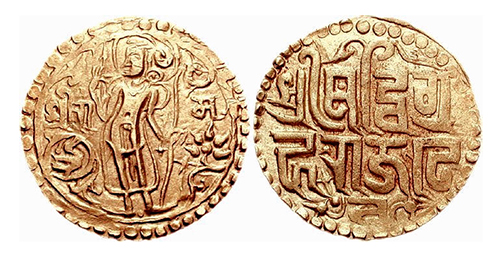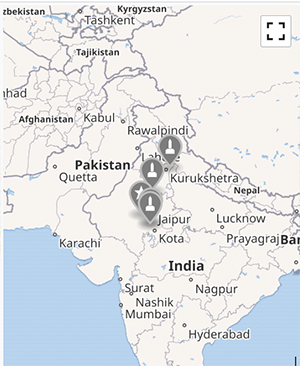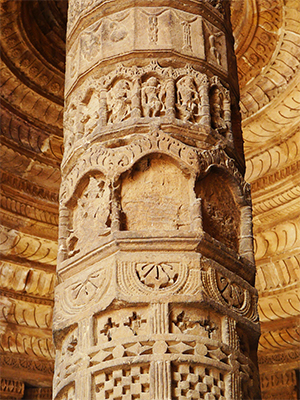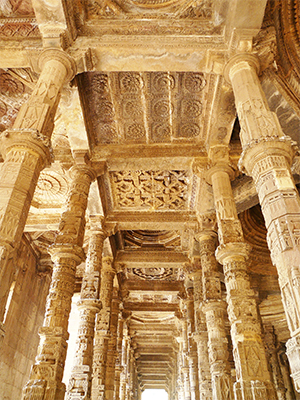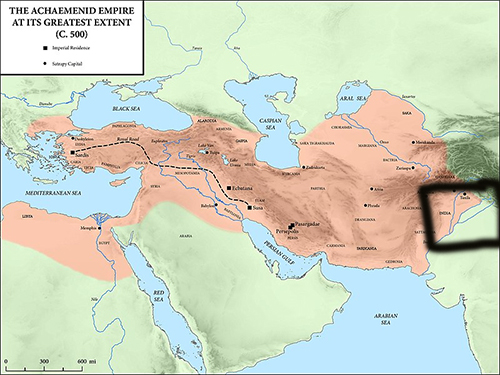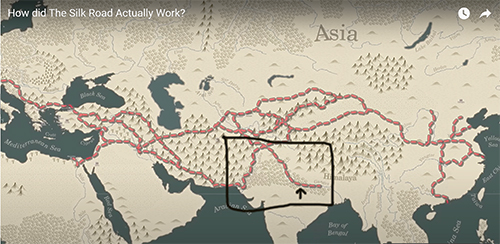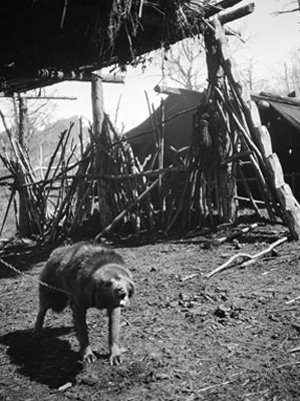by Wikipedia
Accessed: 11/17/24
I. Varahamihira’s Time
Unfortunately, there is considerable divergence of opinion regarding his date. The Jyotirvid-abharana (XXII. 10), professedly composed by the celebrated Kalidasa, the author of the three poems (XXII. 19-20) and a court-poet of the traditional Vikramaditya of the first century B.C., includes Varahamihira among the nine gems of Vikramaditya’s court. If we were to believe in this tradition, Varahamihira will have to be placed in the first century B.C.10 However, besides the inferiority of this work to Kalidasa’s known compositions, the text contains sufficient evidence to prove that it is a very late forgery attributed to Kalidasa with the ulterior motive of popularising it. It mentions in a prophetic fashion the Salivahana-Saka (or the well-known Saka era of 78 A.D.) which commenced 135 years later than the Vikrama era. (X. 110-112). On the basis of certain astronomical details contained in this work historians of Indian astronomy like Sudhakara Dvivedi 11 and S.B. Dikshit 12 are inclined to date its composition in about 1242-43 A.D., while on some other considerations Keith 13 and H. Kern 14 bring it down to so late dates as the sixteenth and eighteenth centuries A.D.
Strangely enough and against the usual practice prevalent among ancient Indian astronomers, Varahamihira himself gives absolutely no indication about his date. In his Panca-siddhantika, however, he refers to the Saka year 427 15 which, following the common vogue, may be taken as the date of the composition of this work or very near it when he began planning it. 16 The Saka-kala is usually taken to refer to the well-known Saka era with its epoch in 78 A.D., and accordingly Saka-kala 427 should be regarded as equal to 105 A.D.
However, as certain statements of Varahamihira in connection with the Saka-kala go against the common notion regarding the date of the Bharata war, 17 some scholars are inclined to identify it with the so-called Cyrus era or the Buddha Nirvana era. But these views are totally against established historical and textual norms, and if we were to accept them, Varahamihira would have to be placed in the second-first centuries B.C. This date, however, is irreconcileable with his reference to Aryabhata 18 who was born in 476 A.D. and composed his work under reference twenty-three years later in 499 A.D. In view of this and other considerations, these theories are totally untenable. 19 Some other scholars have proposed to equate Varahamihira’s Saka-kala with the famous Vikrama era with its epoch in 57-58 B.C. As we have shown elsewhere in this volume, 20 this opinion is as, if not more, untenable as the two other theories on the subject. It also does not go well with allusion to Aryabhata as in this case also Varahamihira would have to be dated a few decades prior to the former’s birth. Therefore, we are left with no alternative but to regard Varahamihira’s Saka-kala, Sakendra-kala and Saka-bhupa-kala as identical with the famous Saka era beginning in 78 A.D. The view also goes well with what Alberuni has to say regarding Varahamihira’s time. Writing his Indian account in 1030 A.D. he states that this year corresponded to the year 526 of the era of the canon Panca-siddantika. He further adds that Varahamihira flourished 525 or 526 years before his own time. These statements, which are clearly based on the mention of Saka-kala 427 in the Panca siddhantika, would be simply unintelligible if the Saka-kala of Varahamihira were to be identified with any other era than the well-known reckoning of this name with its epoch in 78 A.D. 21 The particulars of the date given by Varahamihira (Caitra sukla pratipada, Saka 427) agree with Sunday-Monday 20th-21st March, 505 A.D. 22
However, some scholars doubt if 505 A.D. could really be the date of the composition of the Panca-siddhantika as according to a statement of Amaraja in his commentary on Brahmagupta’s Khanda-khadyaka Varahamihira died in Saka 509 or 587 A.D. (nav-ahika-panca Sata-sankhya-Snke Varahamihir-acaryo divam gatah). It has, therefore, been suggested by a few scholars that it may refer to some important event in Varahamihira's own life like his birth. 23 However, the veracity of this passage has been doubted by competent authorities, as it is not certain if this statement is in verse or prose and whether it has come down to us in its original form through about a thousand years that have elapsed since its composition. 24 But even if we were to take it as authentic, it should not cause much difficulty as it is not beyond the bounds of possibility that Varahamihira began his literary activities at a young age of twenty or twenty-five when he composed or began his calculations for the Panca-siddhanika in 505 A.D., and passed away in 587 A.D., at the rather exceptionally high age of about 105 or 110, which, though very uncommon, is not impossible altogether. 25
Another important indication on this point is the reference to the Aulikara monarch Maharajadhiraja Sis-Dravyavardhana in the Brhat-samhita in connection with the omens in a manner indicative of high esteem in which Varahamihira held him and of the fact that he was alive at the time of the composition of the text which is admittedly his most mature and one of the latest works. It was obviously composed about the middle of the sixth century A.D. when Dravyavardhana was ruling as a sovereign ruler from Ujiayini. 26 There are some other literary and cultural evidences, positive and negative, which also support in a general manner the sixth century A.D. as the flourishing period for Varahamihira. 27
_______________
Notes:
10 Sitaram Jha (Brhaj-jataka with Utpala’s gloss, Banaras 1934) gives the reading as 'Vasvastastimite and argues: [x] —There is nothing to commend V. Subrahmanya Sastry’s view (Saravali of Kalyanavarman, Bombay 1928, Preface, pp. 1-2) that Utpala lived at the time of the Mughal emperor Jahangir (1605-1627 A.D. ).
11 E. Sachau, Alberuni's India, I, pp. 157-58, 298, 334, 336-37, 361.
12 Ibid. p. 298.
13 S. B. Dikshit, History of Indian Astronomy (Marathi), p. 235.
14 Ibid.
15 We know another Bhaskara who was a direct pupil of Aryabhata and who composed the Maha-Bhaskariya and Laghu-Bhaskariya. Vide P. C. Sengupta, Khandi.khadyaka (Eng. tr.), Calcutta, 1934, Preface, pp. xiii-xiv.
16 JBBRAS, 1948-49, pp. 30-31. Dr. Kane informs us that these verses are not found in some manuscripts of the commentary.
17 I.e. arrangement of constellations according to zodiacal signs and decans which rise simultaneously or set or culminate simultaneously.
18 Bulletin of the Royal Academy of Belgium, for 1957-58. pp. 133- 140.
19 Prof. Naugebaurer’s arguments are summarised in JAS, Bombay, 1958, pp. 147f.
20 Ibid.
21 Miscellaneous Essays, II. pp. 461-463.
21a Cf. Jyotirvidabharana. IV. 53, X. 110, 111, XXII. 13.
22 In the Charwa stone inscription of the reign of Devapaladeva of Dhara. line 7, the word Saka is used to denote Vikrama samvat. It belongs to 1217-18 A.D. For some more examples, see IA, XIX (1890), pp. 24-25. No. 11.
23 On BS, VIII. 20.
24 [x]
25 Also vide Colebrooke, Miscellaneous Essays, II, p. 478.
26 [x] JA, X. p. 58.
27 Saka-nrpati-samvatsaresu, IA, VI, p. 73; Saka-nrpa-samvatsaresu, IA, XII, p. 16; Suka-nrpa-kala, EI, III, p. 109.
-- Varahamihira and His Times, by Ajay Mitra Shastri, M.A., Ph.D., D. Litt., F.R.N.S., Professor and Head Department of Ancient Indian History, Culture and Archaeology, Nagpur University, Nagpur
-- Alberuni's India: An Account of the Religion, Philosophy, Literature, Geography, Chronology, Astronomy, Customs, Laws and Astrology of India About A.D. 1080, by Dr. Edward C. Sachau, Professor in the Royal University of Berlin and Principal of the Seminary for Oriental Languages; Member of the Royal Academy of Berlin, and Corresponding Member of the Imperial Academy of Vienna, Honorary Member of the Asiatic Society of Great Britain and Ireland, London, and of the American Oriental Society, Cambridge, USA, 1910
-- The Saka Era of Varahamihira (Salivahana Saka) [Rep. from Journal of Indian History (Trivandrum), 36 (1958) 343-67, Excerpt, from Collected Papers on Jyotisha, by T.S. Kuppanna Sastry (Former Hony. Professor, Sanskrit College, Madras), 1989
Varāhamihira
Born: c. 20-21 March 505 CE[a] possibly Kapitthaka (identified with Kayatha or Sankissa)
Died: possibly 587 CE (disputed; see Date section)
Occupation: astrologer-astronomer
Notable works: Pancha-siddhantika, Brhat-samhita, Brihajjataka
Varāhamihira (c. 20/21 March 505 – c. 587), also called Varāha or Mihira, was a Hindu astrologer-astronomer who lived in or around Ujjain in present-day Madhya Pradesh, India.
Date
Unlike other prominent ancient Indian astronomers, Varāhamihira does not mention his date.[1] However, based on hints in his works, modern scholars date him to the 6th century CE; possibly, he also lived during the last years of the 5th century.[2]
In his Pancha-siddhantika, Varāhamihira refers to the year 427 of the Shaka-kala (also Shakendra-kala or Shaka-bhupa-kala). Identifying this calendar era with the Shaka era places Varāhamihira in the 505 CE. Alternative theories identify this calendar era with other eras, placing him before the 5th century CE. However, these theories are inaccurate, as Varāhamihira must have lived after Aryabhata (born 476 CE), whose work he refers to. The particulars of the date mentioned by Varāhamihira - Shukla pratipada of the Chaitra month of the Shaka year 427 - align accurately with 20-21 March 505 CE. Al-Biruni also places Varāhamihira in 505 CE.[3]
In accordance with the contemporary tradition, 505 CE was most probably the year in which Varāhamihira composed Pancha-Siddhantaka or began planning it.[1] However, some scholars believe that it was the year of Varāhamihira's birth or of another important event in his life. This is because according to Amaraja, the author of a commentary on Brahmagupta's Khanda-khadyaka, Varāhamihira died in 587 CE (Shaka year 509). If Varāhamihira wrote his work in 505 CE even at the young age of 25, he must have been over 105 years old at the time of his death, which seems exceptionally high to these scholars.[4] Consequently, these scholars consider date Varāhamihira's lifespan to 505-587 CE.[5] Other scholars doubt the accuracy of Amaraja's statement, since he lived a thousand years after Varāhamihira.[4]
According to a historically inaccurate tradition, Varāhamihira was associated with the first century BCE legendary emperor Vikramaditya.[6][7] This tradition is based on Jyotirvid-abharana, a work attributed to Kalidasa, which states that Varāhamihira (along with Kalidasa) was one of the navaratnas ("nine gems") at Vikramaditya's court. However, this text is a literary forgery, and is dated variously from 12th-18th century.[1][8] Varāhamihira definitely did not live in the same century as some of the purported "Navaratnas", such as the much older Kalidasa.[9]
Early life
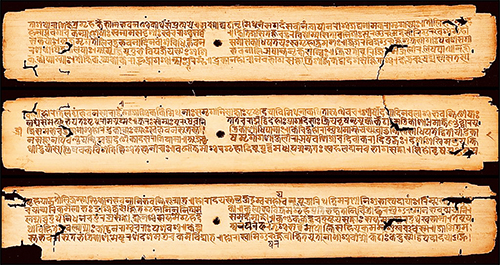
1399 CE manuscript of the Brihajjataka
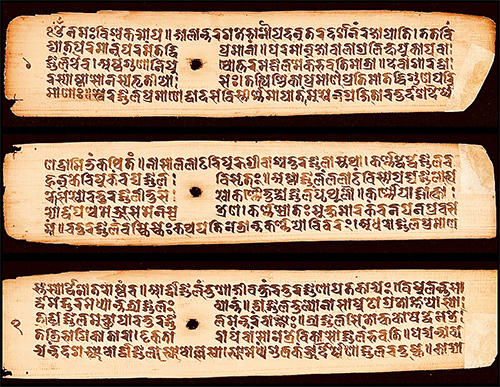
1279 CE manuscript of the Brhat-samhita
Much of the undisputed information about the life of Varāhamihira comes from a stanza in his Brhaj-jataka. According to this stanza, he was a resident of Avanti, was a son of Aditya-dasa, and studied at Kapitthaka through the boon of the sun god.[10]
Ancestry
Varāhamihira's father Aditya-dasa likely trained him in jyotisha (Indian astrology and astronomy), as suggested by the Brhaj-jataka stanza and the opening stanza of Pancha-siddhantika.[10]
Varāhamihira's commentator Utpala calls him "Magadha-dvija". According to one interpretation, this means that Varāhamihira was a Brahmin (dvija), whose ancestors belonged to the Magadha region.[11][12]
According to another theory, the word "Magadha" in this context refers to the sun-worshipping Maga cult that Varāhamihira was a part of. In his Brhat-samhita, Varāhamihira mentions that the Magas were the only people suitable for consecrating an image of the Sun god. The Magas, as they came to be known in India, originated from the Magi priests of the Achaemenid Empire. Historian Ajay Mitra Shastri cites a Bhavishya Purana passage according to which the term "Magadha" is a synonym of "Maga" and refers to "those who contemplate on the Maga". According to Shastri, Utpala has used the word "Magadha" to denote the Magas, who had been accepted as Shaka-dvipi (Maga) Brahmins in the Indian society.[13]
Shastri theorizes that "Varaha-mihira" may be a Sanskritized form of the Iranian name "Varaza-Mihr", and may refer to a legend mentioned in the Mihr Yasht of the Avesta. According to this legend, the god Verethraghna, in the form of a boar (varaza), precedes Mihr in his march. Shastri notes that the 5th century Sassanian monarch Bahram V bore the name Mihrvaraza, which is quite similar to Varahamihra. Academic J.E. Sanjana suggests that Varāhamihira was descended from an Iranian Magi priest.[14]
Some scholars, such as M.T. Patwardhan and A.N. Upadhye, have identified Varāhamihira with Bazurjmehr, mentioned in Firishta's writings as a minister of the Sasanian king Khusraw Nushirwan (r. 531-578). However, A.M. Shastri dismisses this theory as unconvincing.[15]
There are several historically inaccurate legends about the ancestry of Varāhamihira:
• Jain writers Merutunga (14th century) and Rajashekhara-Suri claim that his original name was Varaha, and he was a brother of the Jain patriarch Bhadrabahu. He gained knowledge because of a favour by the Sun, because of which the suffix "Mihira" ("Sun") was added to his name.[16] Jain authors seem to have fabricated this story to prove the pre-eminence of the Jain astrology over the Brahmanical astrology.[17]
• Another 20th century legend, purportedly based on "some old Gujarati text" claims that Aditya-dasa's wife was called Satya-vati alias Indu-mati: Varāhamihira was born to them in their fifties by the boon of the Sun. He was originally known as Mihira, and was given the prefix "Varaha" by King Vikramaditya when he correctly predicted that a boar (varaha in Sanskrit) would kill the king's son.[18]
• A tradition associates Varāhamihira with Berachampa in West Bengal, where a mound called "Varāhamihira's house" is located. This seems to be the result of an attempt to associate the locality with a famous figure. A legend from the Bengal region claims that Varaha and Mihira were a father-son duo at Vikramaditya's court, and the poet Khana was Mihira's wife. This legend is of no historical value.[19] "Varaha" and "Mihira" were alternative names for the same person - Varāhamihira, as attested by the later astronomical works.[10]
• Another legend claims that the Mimamsa teacher Shabara-svamin had four wives, one from each varna, and Varāhamihira was his son from his Brahmin wife. Some scholars, such as S.K. Dikshit, have theorized that Aditya-dasa (or Aditya-deva) was another name of Shabara-svamin, but no historical evidence supports this tradition.[17]
Birthplace
Kapitthaka, where Varāhamihira studied, was probably his birthplace.[12][10] While "Kapitthaka" is the most popular reading the place's name, several variants of this name appear in various manuscripts, including Kampilyaka,[ b] Kapilaka, Kapishthala, and Kapishkala.[10] Utpala suggests that this village had a sun temple. According to one theory, Kapitthaka is the modern Kayatha, an archaeological site near Ujjain. Statues of the sun deity Surya (whom Varāhamihira worshipped) dated 600-900 CE have been found there, and kapittha trees are abundant in and around Kayatha. However, no historical source suggests that Kapitthaka was another name for Kayatha. According to another theory, Kapitthaka is same as Sankissa (ancient Sankashya) in present-day Uttar Pradesh: according to the 7th-century Chinese traveler Xuanzang, this town was also known as Kah-pi-t'a. Historian Ajay Mitra Shastri notes that Kah-pi-t'a is phonetically similar to Kapittha or Kapitthaka.[21]
Based on the term "Magadha-dvija" (see above), Sudhakara Dvivedi suggests that Varāhamihira was born and brought up in Magadha, and later migrated to Ujjain.[22] Ajay Mitra Shastri disputes this, noting that Utpala describes him as "Avantikacharya" (Acharya of Avanti) and "Magadha-dvija": these two terms cannot be reconciled if "Magadha-dvija" is interpreted as "Dvija (Brahmana) of Magadha"; instead "Magadha" here means Maga, as attested by the Bhavishya Purana.[11]
Residence
Besides the above-mentioned stanza, Varāhamihira's association with Avanti is confirmed by other evidence: in Pancha-siddhantika, he calls himself Avantyaka ("of Avanti"), and the later commentators such as Utpala and Mahidhara describe him as Avantikacharya ("acharya of Avanti").[10] Utpala also describes Varāhamihira's son Prthu-yashas as Avantikacharya, in his commentary on Shat-panchashika.[23]
Historian Ajay Mitra Shastri, relying on Utpala, believes that "Avanti" here refers to the city of Ujjayini in the Avanti region of central India.[10] Scholar Dániel Balogh, however, notes that Avanti here may refer to the city of Ujjayini or the Avanti region in general: there is no concrete evidence that Varāhamihira lived in the city; he may have lived elsewhere in Avanti.[24]
Royal patron
Varāhamihira likely lived in the Aulikara kingdom, as the Aulikaras ruled Avanti in the 6th century CE.[25][26] Varāhamihira's Brhat-samhita states that on the topic of omens (shakuna), one of the works he consulted was that of Dravya-vardhana, the king of Avanti.[27] Dravya-vardhana likely belonged to the Aulikara dynasty, several of whose members bore names ending in -vardhana.[25]
Historian Ajay Mitra Shastri notes that Dravya-vardhana is the only person for whom Varāhamihira employs the honorific Shri, although he mentions several other notable people. Moreover, he mentions Dravya-vardhana's work before he mentions reputed authorities such as the Saptarishis and Garga. According to Shastri, this, combined with the fact that both Dravya-vardhana and Varāhamihira lived in Avanti, suggests that Dravya-vardhana was the royal patron of Varāhamihira.[27] Shastri theorizes that Dravya-vardhana was a successor of Yashodharman alias Vishnu-vardhana, who may have also been a patron of Varāhamihira.[28]
Some other historians identify Dravya-vardhana with the earlier Aulikara ruler Drapa-vardhana. Shastri disputes this, arguing that Varāhamihira describes Dravya-vardhana as a maharajadhiraja (emperor), while the Rīsthal inscription describes Drapa-vardhana as a senapati (commander). Balogh disagrees with Shastri, noting that Varāhamihira actually uses the term nrpo maharajadhiraja-kah (nrpa or ruler "connected to the emperor") for the king, which Shastri has misunderstood as maharajadhirajah (emperor). Only one manuscript reads maharajadhirajah, which can be discarded as it doesn't fit the metre; three others have maharajdhiraja-jah. Thus, the actual title of Drapa-vardhana was nrpa, which is much closer to senapati in status. Utpala also interprets the term maharajadhiraja-kah to mean "born in the dynasty of the (or an) emperor".[29] Hans Bakker interprets the term to maharajadhiraja-kah as a governor installed at Ujjayini by the contemporary Gupta emperor.[26] Balogh believes that Dravya-vardhana was probably same as Drapa-vardhana: "Dravya" may be a variant arising from a mistake in a medieval manuscript, which is the source of later manuscripts.[26]
Balogh disputes Shastri's assertion that Varāhamihira shows a particularly reverential attitude to the king, and even if he did, this is no evidence that the two were contemporaries. Varāhamihira consulted the king's work instead of the original work of Bharadvaja that it was based on; according to Balogh, this actually makes it more likely that the king lived at a time earlier than Varāhamihira, who did not have access to the older work of Bharadvaja.[30]
According to Balogh, Varāhamihira likely lived during the reign of the Aulikara kings Prakasha-dharman, Yashodharman, or an unknown successor of Yashodharman. However, unlike Shastri, Balogh believes that Varāhamihira did not have a royal patron.[26]
Religion
Several scholars theorize that Varāhamihira came from a Brahminized family of the sun-worshipping Magi priests (see Ancestry above).[31][13] He was a worshipper of the sun god Savitur, and stated that he had received all his knowledge by the grace of this god.[32] For example, in Brhaj-jataka, he states that he was able to compose the text because of a boon by the Sun.[28] While he mentions other deities, he devotes a much larger number of verses to the Sun.[11] His commentator Utpala credits his sharp intellect to a boon by the Sun.[28] Some later writers describe him as an incarnation of the Sun god.[18] Utpala, for example, declares that the Sun descended on earth in the form of Varāhamihira to save the jyotisha-shastra from destruction.[33] The Subhashita-ratna-kosha quotes stanzas that praise Varāhamihira as an incarnation of Vishnu and the Sun, presumably because of two parts of his name (varaha referring to an avatar of Vishnu, and mihira meaning sun).[23]
Sun worship seems to have been his family's religion, as his father Aditya-dasa's name literally means "slave (or servant) of the Sun".[28][34] Kutuhula-manjari, a later text, suggests that Varāhamihira was born to Aditya-dasa by the blessings of the Sun. Varāhamihira's son Prthu-yashas also invokes the Sun in the opening stanza of his work Shatpanchashikha.[28]
Varāhamihira was well-versed with the Vedic tradition.[35] He recommends the performance of several ancient Hindu rituals such as Punyaham and chanting of Vedic hymns.[36]
Varāhamihira praises Vishnu in the chapters 42 and 104 of Brhat-samhita, leading A.N.S. Aiyangar and K.V.R Aiyangar to speculate that he came in contact with the Shrivaishnava saints (Alvars); however, A.M. Shastri dismisses this theory, describing the praise for Vishnu as an example of religious eclecticism.[37]
In Brhat-samhita, Varāhamihira discusses the iconography of several Brahmanical deities, including Vishnu, Baladeva, Ekanamsha, Shamba, Pradyumna, consorts of Shamba and Pradyumna, Brahma, Skanda, Indra, Shiva, Surya, the divine mothers (Matrikas), Revanta, Yama, Varuna, and Kubera.[38] These were presumably the popular gods worshipped during his period. He also describes the iconography of two non-Brahmanical faiths, that of the Buddha and the Jinas. He appears to have been religiously liberal, as he reveres the Buddha as "the father of the world" and devotes an entire stanza to Buddha's iconology (compared to shorter descriptions of several Brahmanical deities).[39] A verse in the Brhat-samhita describes the iconography of Ganesha, but this verse appears only in one or two manuscripts, and is likely a later interpolation. Similarly, a Tikanika-yatra verse in which the author reveres Ganesha (among other deities), is likely spurious; this verse appears only in one manuscript.[40]
Works
Varāhamihira is credited with writing several authoritative texts on astronomy and astrology. He was also known for his poetic skills, and the 11th-century writer Kshemendra describes him as a great poet.[2]
He apparently wrote a set of two works - detailed and short - in the following areas:[41]
Area / Detailed work / Short work
Mathematical astronomy (tantra) / Pancha-siddhantika / Now lost, known from Utpala's commentary
Horoscopy (hora): nativity / Brhaj-jataka / Laghu-jataka
Horoscopy: marriage / Brhad-vivaha-patala / Svalpa-vivaha-patala
Horoscopy: journeys / Brhad-yatra and Yoga-yatra / Svalpa-yatra
General astrology (samhita) / Brhat-samhita / Samasa-samhita
The chronological order of some of these works can be determined based on the internal evidence and Utpala's commentary. In order or earliest to latest, these works are:[42]
• Pancha-siddhantika
• Brhaj-jataka
• Brhad-yatra
• Yoga-yatra (according to Utpala, Varaha-mihira wrote this because he was dissatisfied with Brhad-yatra)
• Brhad-vivaha-patala
• Brhat-samhita
Laghu-jataka states that it was written after Brhaj-jataka, and Utpala's commentary states that it was written after the abridged version of Pancha-siddhantika. However, its order with respect to the other works is not certain.[42]
Later authors also mention or quote from some other works composed by Varaha-mihira. Manuscripts of some other works attributed to Varaha-mihira exist, but these attributions are of doubtful nature.[42]
Influences
The Romaka Siddhanta ("The Doctrine of the Romans") and the Paulisa Siddhanta were two works of Western origin which influenced Varāhamihira's thought. The Pauliṣa Siddhānta is often mistakenly thought to be a single work and attributed to Paul of Alexandria (c. 378 CE).[43] However, this notion has been rejected by other scholars in the field, notably by David Pingree who stated that "...the identification of Paulus Alexandrinus with the author of the Pauliṣa Siddhānta is totally false".[44] A number of his writings share similarities with the earlier texts like Vedanga Jyotisha.[45]
Some scholars consider Varāhamihira to be the strong candidate for the one who understood and introduced the zodiac signs, predictive calculations for auspicious ceremonies and astrological computations in India.[46][47][48]
Varāhamihira's works contain 35 Sanskritized Greek astronomical terms, and he exhibits a good understanding of the Greek astronomy.[49] He praised the Greeks (Yavanas) for being "well trained in the sciences", though impure in ritual order.[50]
Legacy
Varāhamihira gained reputation as the most eminent writer on jyotisha after his death, and his works superseded nearly all the earlier Indian texts in this area. Several later Indian astrologer-astronomers speak highly of him, and acknowledge his works among their main sources.[51] The 11th-century writer Al-Biruni also greatly admires him, describing him as an excellent astronomer.[52]
See also
• List of Indian mathematicians
Notes
1. Birthdate is disputed, see #Date
2. Sudhakara Dvivedi, following the reading "Kampilyaka", identified Varahamihira's birthplace as present-day Kalpi in Uttar Pradesh. However, this identification is incorrect: the ancient name of Kalpi was Kalapriya, not Kampilyaka.[20]
References
1. A.M. Shastri 1991, p. 3.
2. A.M. Shastri 1991, p. 1.
3. A.M. Shastri 1991, pp. 3–4.
4. A.M. Shastri 1991, p. 4.
5. Evans, Brian (24 February 2014). The Development of Mathematics Throughout the Centuries: A Brief History in a Cultural Context. John Wiley & Sons. p. 61. ISBN 978-1118853979. Varāhamihira, a mathematician born around 505 CE and died 587 CE, who was also known for innovation with Pascal's triangle.
6. History of Indian Literature. Motilal Banarsidass Publications. 2008. p. 46.
7. Gopal, Ram (1984). Kālidāsa: His Art and Culture. Concept Publishing Company. p. 15.
8. M. Srinivasachariar (1974). History of Classical Sanskrit Literature. Motilal Banarsidass. pp. 94–111. ISBN 9788120802841.
9. Winternitz, Moriz (1985). History of Indian Literature. Motilal Banarsidass. pp. 45–47. ISBN 978-81-208-0056-4.
10. A.M. Shastri 1991, p. 5.
11. A.M. Shastri 1991, p. 10.
12. T.K Puttaswamy (2012). Mathematical Achievements of Pre-modern Indian Mathematicians. p. 141. ISBN 9780123979131.
13. A.M. Shastri 1991, pp. 10–11.
14. A.M. Shastri 1991, p. 13.
15. A.M. Shastri 1991, pp. 17–18.
16. A.M. Shastri 1991, pp. 8–9.
17. A.M. Shastri 1991, p. 17.
18. A.M. Shastri 1991, p. 9.
19. A.M. Shastri 1991, p. 248.
20. A.M. Shastri 1969, p. 15.
21. A.M. Shastri 1991, p. 6.
22. A.M. Shastri 1991, p. 27.
23. A.M. Shastri 1991, p. 24.
24. Dániel Balogh 2019, p. 142-143.
25. A.M. Shastri 1991, p. 51.
26. Dániel Balogh 2019, p. 143.
27. A.M. Shastri 1991, pp. 43–45.
28. A.M. Shastri 1991, p. 8.
29. Dániel Balogh 2019, pp. 141–142.
30. Dániel Balogh 2019, p. 142.
31. Abraham Eraly (2014). "Pearls and Pebbles". The First Spring Part 2: Culture in the Golden Age of India. Penguin. ISBN 9789351186465. He belonged, as his name indicates, to a Brahminized family of the Magi, sun-worshipping Zoroastrian priests, and he himself came to be regarded in later times as an incarnation of the sun god.
32. B. Suryanarain Rao, ed. (1986). Sree Varaha Mihira's Brihat Jataka. Motilal Banarsidass. p. 612. ISBN 9788120813953.
33. A.M. Shastri 1969, p. 1.
34. M.R. Bhatt 1996, p. 572.
35. M.R. Bhatt 1996, p. 638.
36. M.R. Bhatt 1996, p. 570.
37. A.M. Shastri 1969, p. 21.
38. A.M. Shastri 1991, pp. 100–120.
39. A.M. Shastri 1991, pp. 120–121.
40. A.M. Shastri 1991, p. 121.
41. A.M. Shastri 1991, pp. 19–20.
42. A.M. Shastri 1991, p. 20.
43. McEvilley, Thomas (November 2001). The Shape of Ancient Thought: Comparative Studies in Greek and Indian Philosophies. Allworth Press. p. 385. ISBN 978-1-58115-203-6.
44. Pingree, David (1978). The Yavanajātaka of Sphujidhvaja. Harvard Oriental Series. Vol. 2. pp. 437–438.
Pingree, David (1969). The Later Pauliśa Siddhānta. Centaurus 14. pp. 172–241.
45. Velandai Gopala Aiyer. The chronology of ancient India: beginning of the Sat Yuga, Dwaper, Treta, and Kali Yuga with date of Mahabharata. Sanjay Prakashan. p. 63.
46. Winternitz, Moriz (1985). History of Indian Literature. Motilal Banarsidass. pp. 685–697. ISBN 978-81-208-0056-4.
47. Pingree, David (1963). "Astronomy and Astrology in India and Iran". Isis. 54 (2). University of Chicago Press: 229–246. doi:10.1086/349703. JSTOR 228540. S2CID 128083594.
48. Sarma, K. V. (2008). "Varahamihira". In Helaine Selin (ed.). Encyclopaedia of the History of Science, Technology, and Medicine in Non-Western Cultures. Dordrecht: Springer Netherlands. pp. 2184–2185. doi:10.1007/978-1-4020-4425-0_9604. ISBN 978-1-4020-4559-2.
49. A.M. Shastri 1991, p. 18.
50. Chaudhuri, Kirti Narayan (1990). Asia Before Europe Economy and Civilisation of the Indian Ocean from the Rise of Islam to 1750. Cambridge University Press. p. 54. ISBN 0521316812.
51. A.M. Shastri 1969, pp. 1–3.
52. A.M. Shastri 1969, p. 4.
Bibliography
• A.M. Shastri (1991). Varāhamihira and His Times. Kusumanjali. OCLC 28644897.
• A.M. Shastri (1969). India as Seen in the Bṛhatsaṁhitā of Varāhamihira. Motilal Banarsidass. ISBN 9780896842212.
• Dániel Balogh (2019). Inscriptions of the Aulikaras and Their Associates. De Gruyter. ISBN 9783110649789.
• M. Ramakrishna Bhat, ed. (1996) [1982]. Brhat Samhita of Varahamihira (Second ed.). Motilal Banarsidass. ISBN 9788120810600.
External links
• The Brihat-samhita; complete translation by N. Chidambaram Iyer Online edition with glossary
• Pancasiddhantika, Brihat Jataka, Brihat Samhita and Hora Shastra Various editions in English and Sanskrit. (PDF)
• The Brihat Jataka (1905) (PDF) – archived from Wayback Machine

